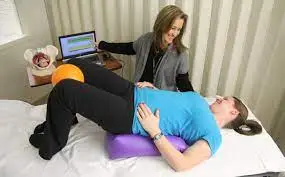The pelvic floor is composed of muscles that help in supporting the reproductive and urinary tracts. It is responsible for controlling bladder and bowel functions. The pelvic floor muscles hold the urinary and reproductive organs in place, together with the tendons and connective tissues. In women, the bladder, vagina, and rectum are being kept in place by the pelvic floor muscles. In men, these are the bladder, bowels, rectum and urethra.
The pelvic floor muscles would become weak and tight due to a variety of reasons, such as aging, having undergone pelvic surgery, being overweight, pregnancy, pelvic muscles overuse or injury. This weakening or disorder is called “pelvic floor dysfunction”. Some of the symptoms include incontinence, constipation, frequent urination, painful sex in women, and erectile dysfunction in men.
Pelvic floor dysfunction commonly affects women. They may have observed that their pelvic muscles have become weak. They may suffer from pelvic pain, decrease in libido, incontinence, pain when urinating, back pain, constipation, and spasms of the pelvic muscles.
As a woman’s body goes through a lot especially during pregnancy and childbirth, the pelvic muscles may be affected by the intense pushing of the baby down the birth canal. This can lead to pressure on pelvic floor muscles, as well as overstretching and tearing. This results in the muscles softening and sinking.
Not just on vaginal birth, but childbirth via C-section can also weaken the pelvic floor muscles. When the muscles are cut during surgery, there’s quite long-term effects experienced post-surgery. The connecting nerves would feel numb and the muscles would still be weak for months or even years after the C-section.
During pregnancy, as the baby’s weight pushes down the pelvic area, it may cause urinary incontinence or leaks. Bladder weakness is also noticed due to aging and obesity. Decreased sexual sensation in women is a symptom of weakend pelvic floor muscles. Because of this reduced sensation (the stronger pelvic muscles are, the more pleasurable the sensation will be), this results to diminishing libido or lost of interest in sex, thus affecting relationships and causing depression.
How does pelvic floor physical therapy benefit people, especially women? Pelvic floor physical therapy aims to regain strength in the pelvic floor muscles, reduce the symptoms, and bring back in doing hampered activities. This is a specialized type of physical therapy that helps to address pelvic floor dysfunction and restore normal functions. This will strengthen the pelvic muscles, ease tightness, and make them more relaxed.
The physical therapist (PT) will evaluate the patient’s condition such as the current strength of the core muscles and endurance to physical activity. The assessment may include checking the coordination of the muscles by trying out various activities. After the evaluation, the PT will make the physical therapy treatment plan that is customized according to the patient’s needs.
There are exercises and techniques that can form part of the treatment plan, such as electrical stimulation (to reduce pelvic spasms or pain), trigger point therapy (putting pressure on trigger spots and sometimes injecting anesthesia), Kegels (exercise that contracts and relaxes the pelvic floor muscles), and biofeedback (uses a device that measures the pelvic floor muscles contractions).
The goal of a pelvic floor physical therapy treatment plan is to restore the normal functions as much as possible, such as controlling bladder and preventing incontinence, reduce discomfort during sex, being able to do other sports or activities, and strengthen the pelvic floor muscles.
Tribeca Physical Therapy New York can help evaluate and design you a physical therapy plan suited to your needs, most especially for women. Send them a message today!



